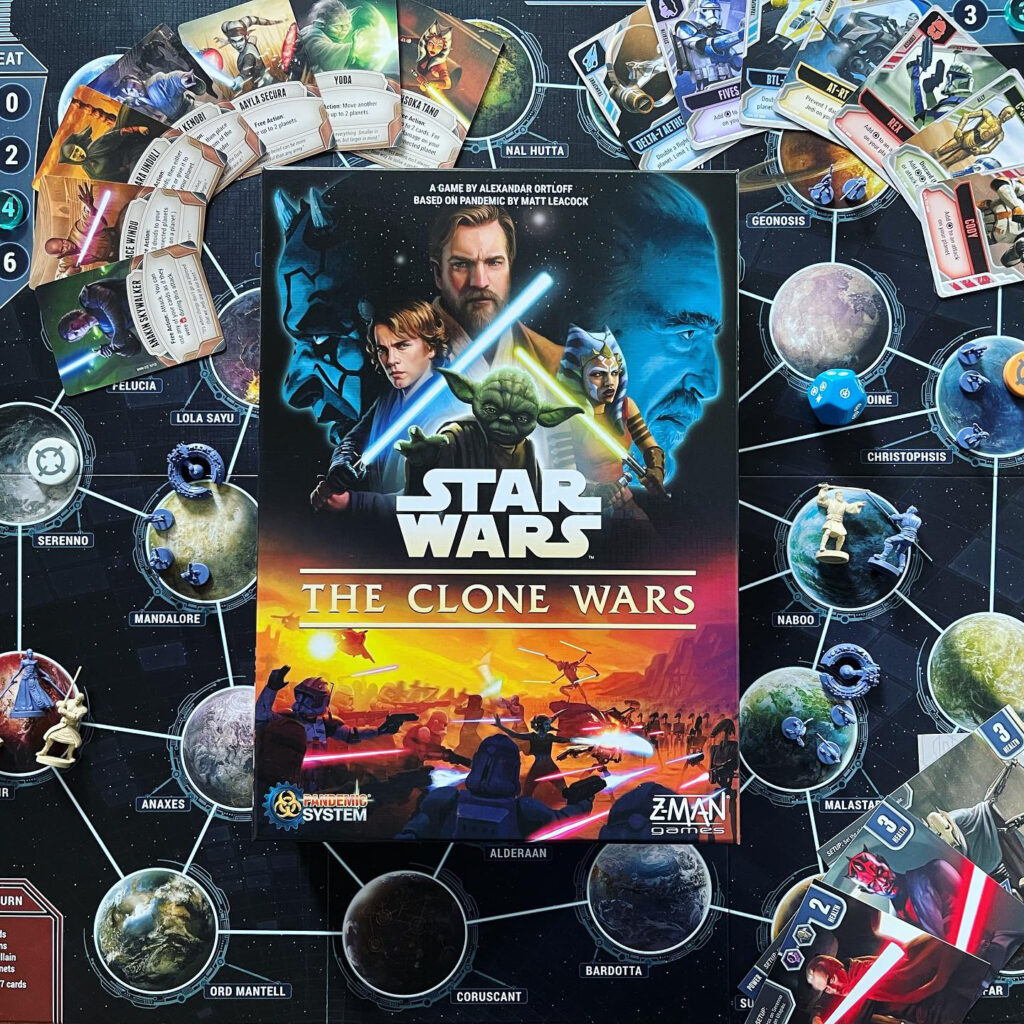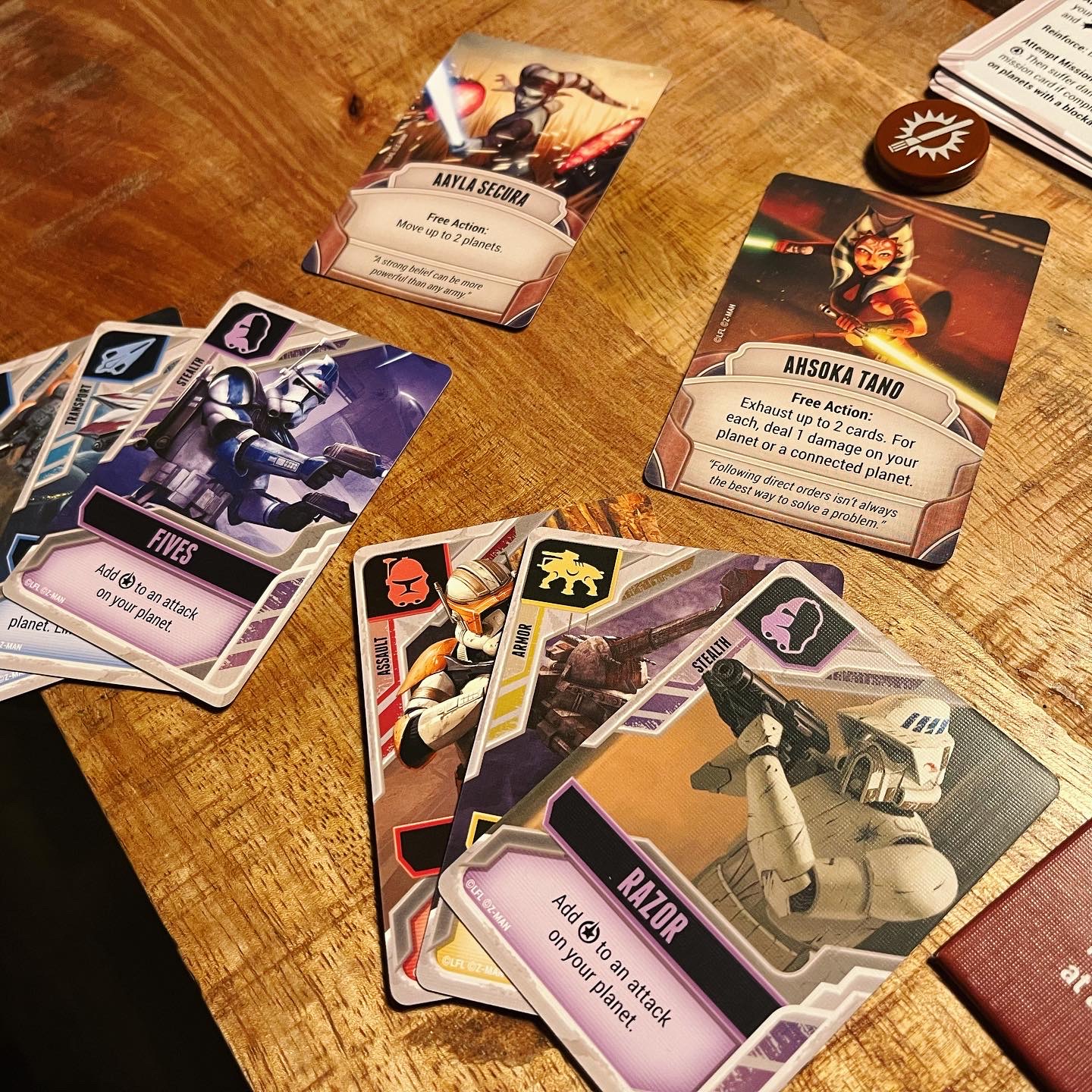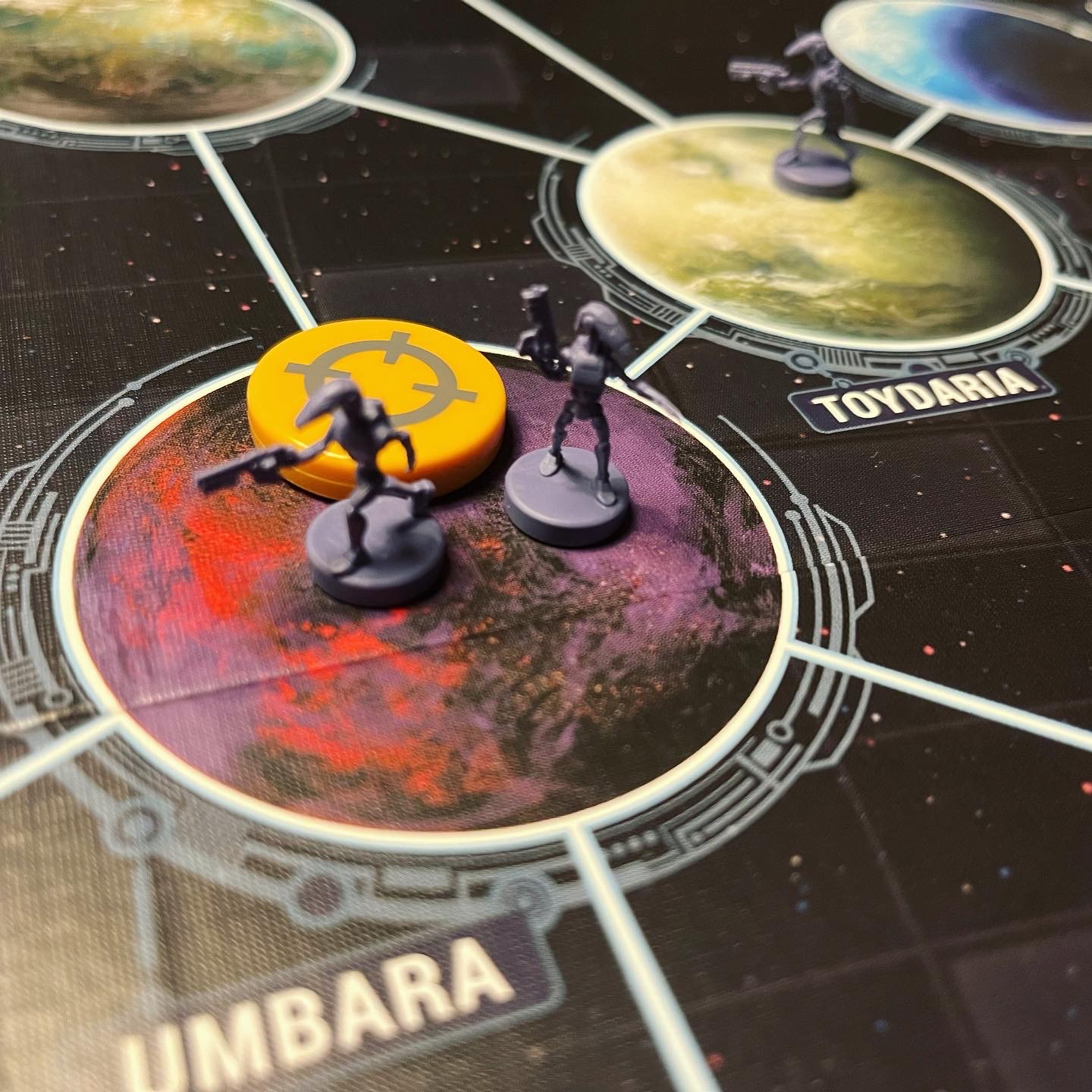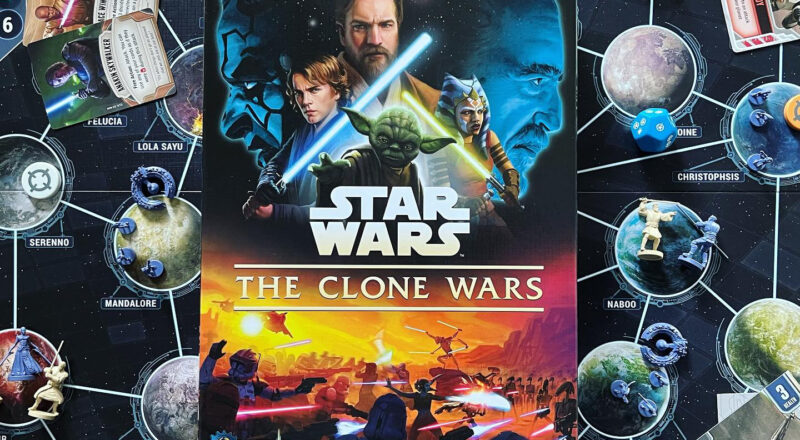A long time ago in a galaxy far, far away… War is raging all over the galaxy. The Separatist Droid Army, its ranks filled with ferocious battle droids, has been deployed by the Confederacy of Independent Systems. The Galactic Republic has procured the commissioning of a grand army consisting of well-trained clones. The ruthless Sith Lord Count Dooku, together with his apprentices and collaborators, seeks to destabilise the grip of the Republic over the galaxy and recruit more planets to the confederacy all while searching for secrets of both the Sith and Jedi.The planet Mandalore is at the brink of a civil war as the terrorist organisation and warrior cult the Death Watch plan a coup against its pacifist government while Darth Maul vies for leadership. Within the Grand Army ranks tensions begin to run high as they can get as clones squadron is assigned with a very deadly, almost suicidal mission to take the capital of Umbara. The Clone Wars are fought on different fronts. There are heroes on both sides. Evil is everywhere. It’s not a story the Jedi would tell you…

Goal and background
Star Wars: The Clone Wars by Z-Man Games is a new game in the Pandemic System series: a series of games based and inspired by the cooperative classic Pandemic. In The Clone Wars, players do not battle outbreaks of various viruses, as we are a bit tired of that after the past couple of years. Besides, the zombies on the planet Geonosis were not created by a virus, but by a space worm! In The Clone Wars, players take on the role of a famous or renowned Jedi such as Ashoka Tano, Ob-Wan Kenobi, Mace Windu, Yoda, Aayla Secura or Luminara Unduli. Unfortunately, no Plo Koon or fan favourite Glup Shitto… As Jedi, players take on hordes of separatists and their clattering metal pals. Once players complete enough missions, they get to take on the big bad. If they defeat this villain, they have won!
There are now several games with the Pandemic game mechanics. A small sample: Iberia, Rising Tide, Fall of Rome, Reign of Cthulhu, World of Warcraft: Wrath of the Lich King, three legacy games and some small editions and other spin-offs. Some Pandemic variants are still very similar to the original and some introduce real game changing mechanisms such as rolling dice to fight and a movement mechanism like Andor introduced in Fall of Rome to varied baddies and constantly changing rules and conditions in Reign of Cthulhu. Some editions have even left out distinctive parts of Pandemic, such as the ‘outbreaks’, entirely, but each game runs essentially the same as the original Pandemic game: each turn, a player performs (often four) actions. Actions are often variations on moving around the board and removing cubes. After a player performs actions, ‘bad’ things happen. Drawing cards ‘infects’ multiple locations on the board and can make the central ‘evil’ stronger. Players replenish their hand cards and it is the next player’s turn to continue the cycle until players have collectively won or lost. To win, players must always achieve some number of missions and/or goals. With ‘breakouts’ or lapse of too much time, players generally lose.


My personal favourite, besides the Legacy editions, is (was) Fall of Rome, but The Clone Wars will probably take over the spot on this specific pedestal. I am a huge Star Wars fan and the implementation of the theme in the Pandemic game mechism also grabbed me. The Clone Wars obviously still feels like Pandemic at its core, but adds refreshing and surprising in my honest opinion. The Clone Wars is by the same designer as the World of Warcraft edition. I have not played that edition due to a lack of interest in the theme, but it is possible that The Clone Wars and that edition have overlapping elements. In The Clone Wars, there are no diseases, no outbreaks, no epidemic-like cards shuffled through player cards and players have to go off cards to travel or complete missions. In addition, there are different villains with their own rules and cards serve as players’ life points. So how is The Clone Wars played?
Setup and gameplay
Players place the board in the centre of the table. Different planets are depicted on the board and along the edge of the board it is conveniently indicated which pile of cards should be placed where. Players choose a villain and difficulty level. Each baddie has its own set of cards and unique rules. The difficulty level determines how many mission cards are shuffled through the mission pile. During the game, a maximum of two mission cards lie face-up. The missions come with two coloured tokens that are placed on the corresponding planets related to those missions. In classic Pandemic fashion, the starting position of the cubes (in this case miniature Battle Droids) on the board is determined by drawing cards. A total of six invasion cards are drawn. Each invasion card shows a planet. On the first two cards, two Battle Droids are placed, on the next two planets two droids and on the last two cards 1 droid. On the last card, the big evil is also placed: one of the villains (Count Dooku, Darth Maul, Asajj Ventress or General Grievous).
The Clone Wars also follows the lines of gameplay of the classic game. Each turn, players perform four actions. In addition, each character has a personal action that can be used in addition to the four actions performed during a turn. After all actions have been performed, it is the central baddie’s turn. A card is drawn from the villain pile and that card determines the villain’s move(s) this turn. Each baddie has a unique deck of cards and its own rules and quirks. The deck of villain cards also contains a card that intensifies the threat. When this card is drawn, the invasion level is increased and the invasion cards are shuffled.
After the baddie’s turn, invasion cards are drawn depending on the invasion level. These invasion cards show planets where new battle droids are placed. Unlike Pandemic, no traditional breakout takes place once more than three droids are placed on a planet. Instead of a breakout to other plants, a blockade is placed. This is a base of the separatists and is trickier to defeat than the droids and must even be defeated before players can defeat droids or villains or complete missions on that planet. Besides placing a blockade also lets the threat level up. Every time a blockade cannot be placed, that level goes up even further. If the threat reaches the maximum level, the game is lost.
Players can use their actions to move their character, draw cards, fight battles and complete missions. Players can use their hand cards to ‘improve’ actions. Cards are placed face-up on the table. Used cards are not discarded, but tapped to their sides to show that a card has already been used in the round. Blue cards allow players to fly one step further on the board. Red and purple cards give players more attack power during combat and yellow cards allow players to use them to avoid damage. Used cards are only reactivated during the next player’s turn.


To fight or complete missions, players must roll the dice. On the dice are so-called success symbols or damage symbols. Players can exhaust cards to add success symbols. Other players can even contribute by exhausting their active cards as well. In battles, only cards in either red or purple colour can be deployed and not in any combination of those colours. In battles, players incur damage from the symbols on the die and for each enemy still on the planet after the battle. Players may also incur damage for completed or failed missions. For the damage incurred, players must discard cards from their hand. If players manage to defeat enough missions and the villain, they have collectively won.
Verdict
I am a huge fan of the Clone Wars. Pandemic is a fantastic game and The Clone Wars refreshes and updates the established and proved gameplay concept. I think the use of hand cards, where the cards also represent life force, is an ingenious and commendable system. By using cards, you can improve actions. You may want to use cards during your own turn or save them to help other players complete difficult battles or missions. By taking a lot of risk, you can take damage, losing valuable cards and have to face even greater risks in subsequent battles and missions. Cards are easy to obtain, but do cost a scarce action point. Bad guys and blockades provide partly unknown threats. The stack of mission cards and the changing locations of these missions are a fun and varied twist on the classic goal of the original game. The different villains also provide plenty of variety. This makes Star Wars the Clone Wars – a Pandemic System game a great game for newcomers, collectors and established fans alike.



